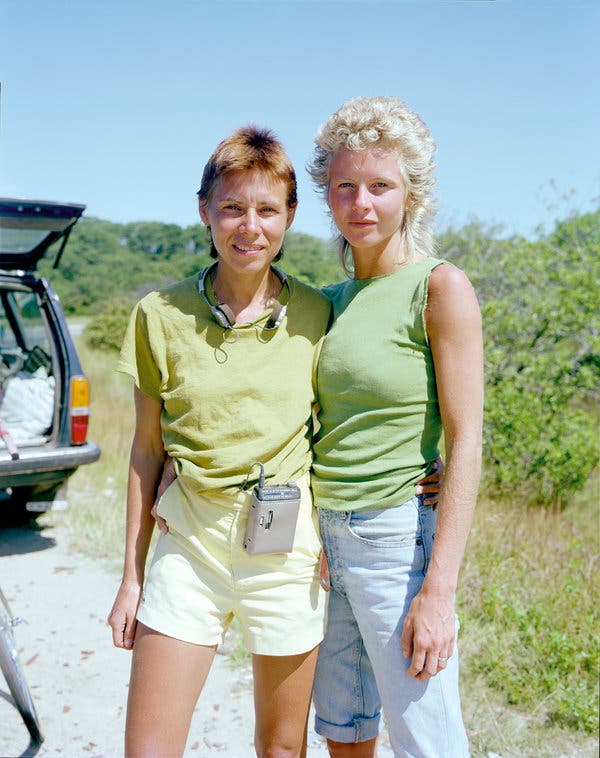Perhaps because I am suspicious of idylls, the siren song of Provincetown has always been lost on me. Long before I’d ever visited the town in Massachusetts, I knew from hippie teenage readings of Henry Beston about the lambent light suffusing this spit of dunes and beach grass at land’s end, a beckoning finger surrounded by ocean at the outermost limits of Cape Cod.
From other, less literary sources I was aware that it was a spot where gay people gathered, far enough from the disapproving gaze of a culture that despised them, to love and hang out and have carefree sex and do the same hand-holding nothing-in-particular that everyone else does without being made to experience themselves as freaks.

CreditJoel Meyerowitz/Aperture
The artists and writers and other assorted bohemians who historically fetched up there were drawn, I assumed, for the usual reasons: cheap rent, silence, freedom to drink during daylight hours without approbation. Provincetown seemed to exist for a surprisingly long time as a place both outside the constraints of mainstream society and, to a certain extent, out of time. That I also thought I knew.
Yet when, finally, after many decades I managed to get there, I found I didn’t care for a town that seemed simultaneously hectic and weary, overrun by tourists and hairy-shouldered lugs in cargo shorts and tank tops.
With the exception of a kooky housewares shop run by an old pal who’d fled the fashion rat race for an itinerant life and a room in a ramshackle shared house, I found little of the quiddity for which the town was famous. Where were the tacky seashell shops? Where was the innocence of honky-tonk beach towns? Was the image I’d formed a mirage?
It was not, as it turns out. The Provincetown I had conjured did once exist, and I know this thanks to a seductive new volume of photographs created decades ago by Joel Meyerowitz and brought together now by happy accident.
“It’s kind of an odd story,” Mr. Meyerowitz, now 81, said by phone from London, referring to “Provincetown,” his collection of portraits from late 1970s and early ’80s. “Jenny Goldberg, my archive director, met one day with Michael Famighetti of Aperture, and he told her about research he was doing, looking for photographs that showed style in the ’80s. She said, ‘But Joel has thousands!’”
Though the numbers were exaggerated, that was not the point. Contained in the archive was a precious document of a lost world and time. Captured between covers is Mr. Meyerowitz’s record of the Provincetown of my imaginings.
Here is magical place where a young woman sits cross-legged and unashamedly naked in shimmering inshore shallows; where a family of women in various states of dress or undress face the camera in frank solidarity; where gay men liberated for once from their otherness occupy public space in a way they had previously not known; where Norman Mailer, relieved of his own gorilla suit of gender expectation, tenderly embraces his towhead son in the sand.
Here a woman identified as Denise perches on the rail of a dock in a leather miniskirt, holey fishnet stockings and a single go-go boot. Where is its mate? Where is this place? Where did a time go when quirky, eccentric, free people might drift up like so much beautiful flotsam on a fragile sandbar 60 miles out in the Atlantic?
The answer is simple: AIDS took it. And this makes far more precious to me the fact that Mr. Meyerowitz, who spent 35 summers in Provincetown living, as he said, “inside this glowing ball of clear, prismatic, marine light,” decided those many decades ago to venture out with his bulky view camera and get it all down.







